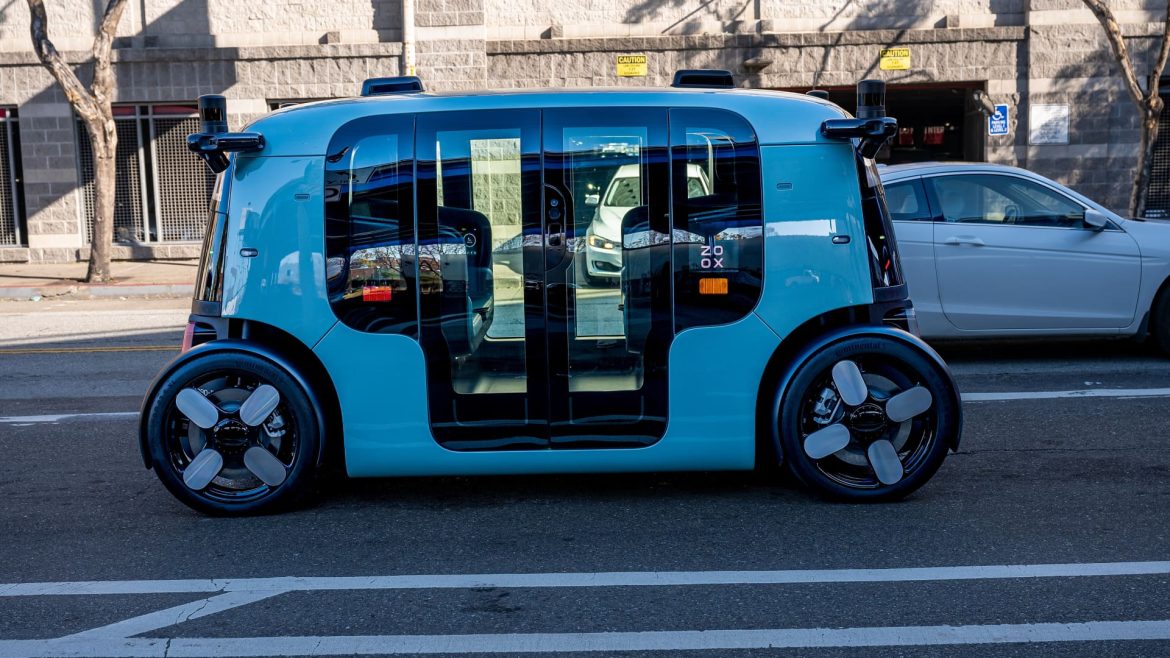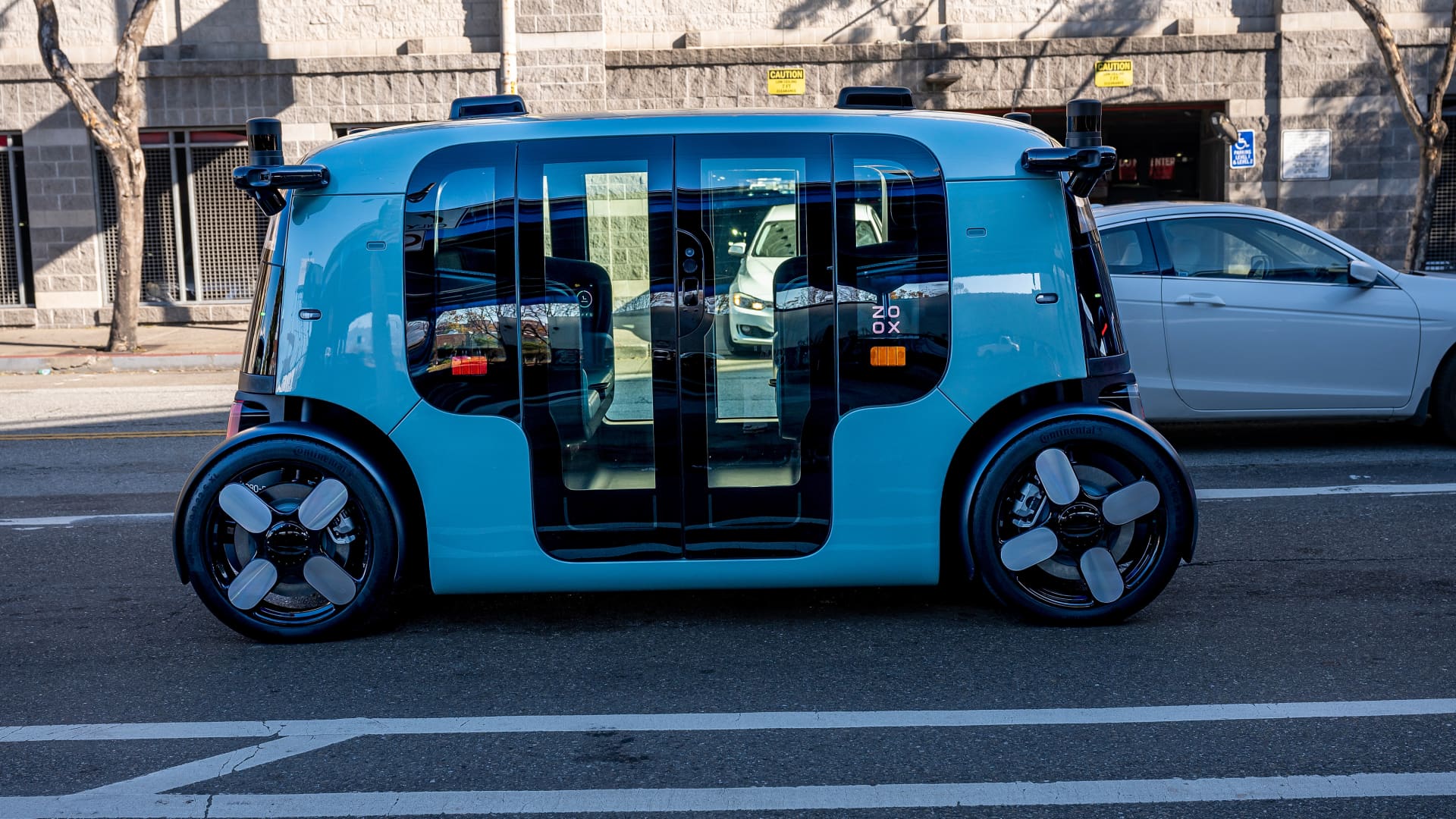The Zoox Recall: A Deep Dive into Amazon’s Robotaxi Safety Concerns
In the rapidly evolving world of autonomous vehicles, safety is paramount. Amazon’s self-driving unit, Zoox, recently found itself in the spotlight due to a software recall affecting hundreds of its robotaxis. This incident raises important questions about the safety and reliability of autonomous driving systems. Let’s delve into the details of the Zoox recall, its implications, and the broader context of autonomous vehicle safety.
The Incident and Recall
On April 8, an unoccupied Zoox robotaxi was involved in a crash with a passenger car in Las Vegas. Fortunately, there were no injuries reported. However, this incident prompted Zoox to pause operations for several days while conducting a thorough safety review. The investigation revealed a defect in the vehicle’s automated driving system that could cause it to inaccurately predict the movement of other vehicles, leading to unexpected hard braking.
As a result, Zoox agreed to recall 270 driverless vehicles. The recall specifically targets vehicles equipped with self-driving software versions released before November 5. Zoox has since developed a software update to address the issue, and the recalled software is no longer in use. The National Highway Traffic Safety Administration (NHTSA) also closed its probe into 258 Zoox vehicles over the braking issue, indicating that the necessary corrective actions have been taken.
The Technical Issue
The root of the problem lies in the automated driving system (ADS) of the Zoox vehicles. The ADS is responsible for perceiving the environment, making driving decisions, and controlling the vehicle. The defect identified in the recalled software versions could cause the ADS to misinterpret the movements of other vehicles, leading to sudden and unexpected braking. This issue poses a significant safety risk, as sudden braking can result in collisions, especially in urban environments where traffic is dense and unpredictable.
Zoox’s decision to recall the affected vehicles and update the software demonstrates a proactive approach to safety. By addressing the issue promptly, Zoox aims to prevent potential accidents and maintain public trust in its autonomous driving technology.
The Broader Context of Autonomous Vehicle Safety
The Zoox recall is not an isolated incident. Other autonomous vehicle companies have also faced similar challenges. For instance, Waymo recalled more than 670 self-driving vehicles last year due to a separate issue. These incidents highlight the complexities and challenges of developing and deploying safe autonomous driving systems.
Autonomous vehicles rely on a combination of sensors, cameras, and advanced algorithms to navigate the roads. While these technologies have made significant strides, they are not infallible. Factors such as adverse weather conditions, complex urban environments, and the unpredictable behavior of other road users can pose challenges for autonomous driving systems.
Regulatory bodies like the NHTSA play a crucial role in ensuring the safety of autonomous vehicles. They conduct investigations, set safety standards, and oversee recalls when necessary. The NHTSA’s closure of the probe into Zoox vehicles indicates that the necessary corrective actions have been taken, and the vehicles are now safe to operate.
The Future of Autonomous Vehicles
The Zoox recall serves as a reminder that the development of autonomous vehicles is an ongoing process. While significant progress has been made, there is still much work to be done to ensure the safety and reliability of these vehicles. Companies like Zoox must continue to invest in research and development, conduct thorough testing, and address any issues that arise promptly.
Public trust is essential for the widespread adoption of autonomous vehicles. Incidents like the Zoox recall can erode public confidence, but proactive measures to address safety concerns can help rebuild trust. As the technology continues to evolve, it is crucial for companies to prioritize safety and transparency in their operations.
Conclusion: A Call for Continued Vigilance
The Zoox recall underscores the importance of safety in the development and deployment of autonomous vehicles. While the incident highlights the challenges faced by the industry, it also demonstrates the proactive measures taken by companies to address these challenges. As we move towards a future where autonomous vehicles become a common sight on our roads, it is essential to maintain a high level of vigilance and prioritize safety above all else. The Zoox recall serves as a reminder that the journey towards fully autonomous vehicles is ongoing, and every step must be taken with caution and care. The future of autonomous driving is bright, but it is a future that must be built on a foundation of safety and reliability.


